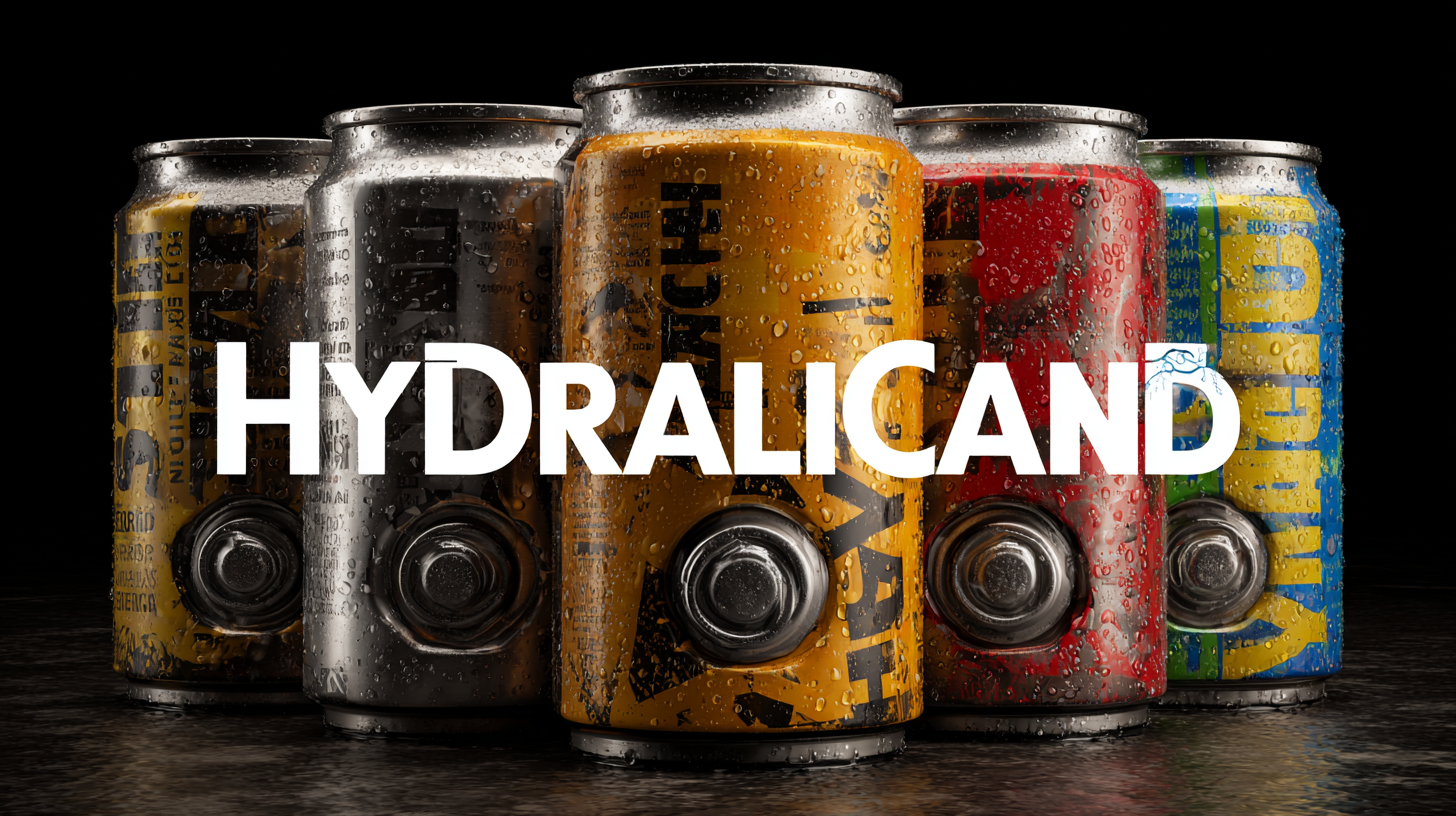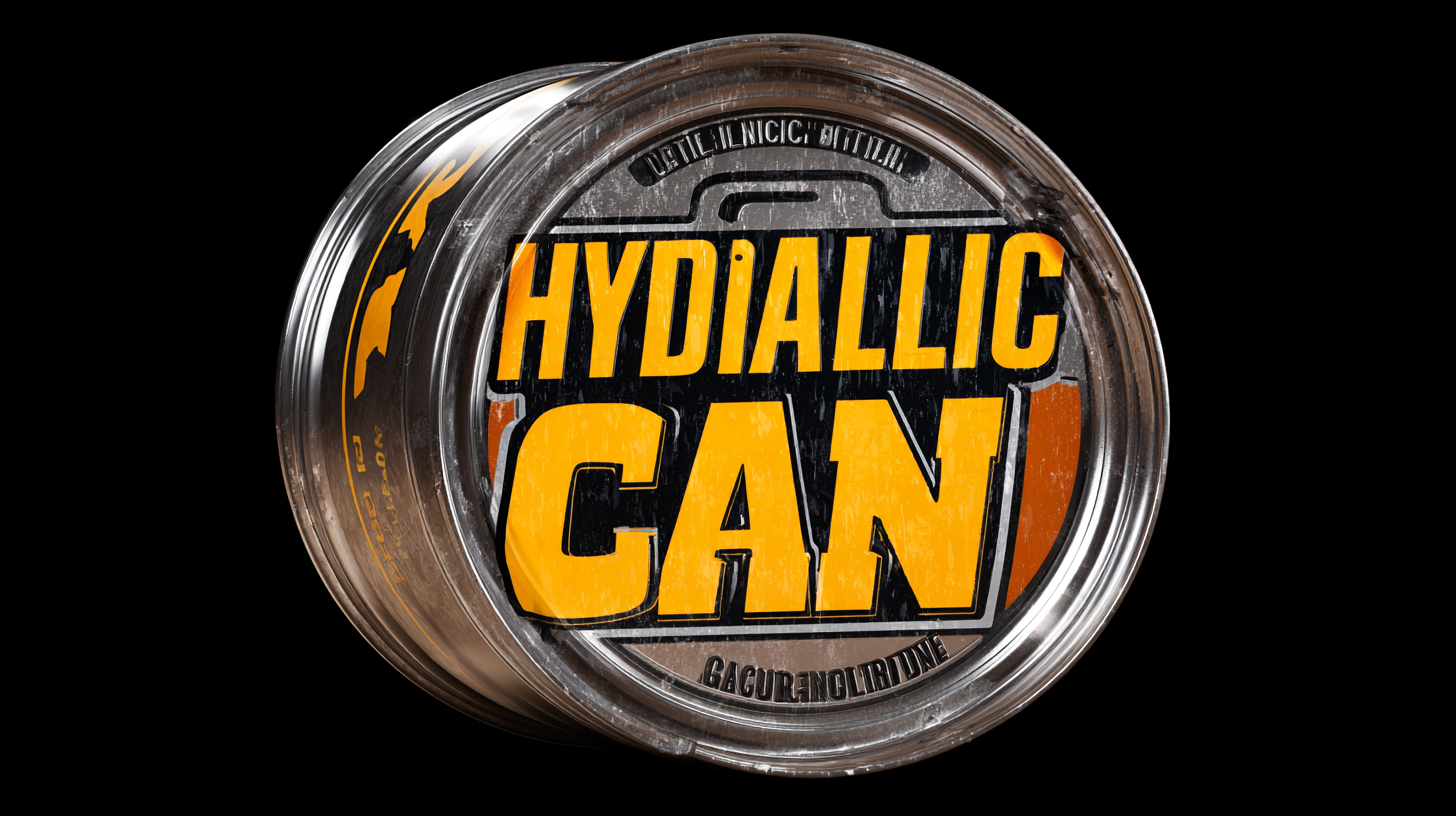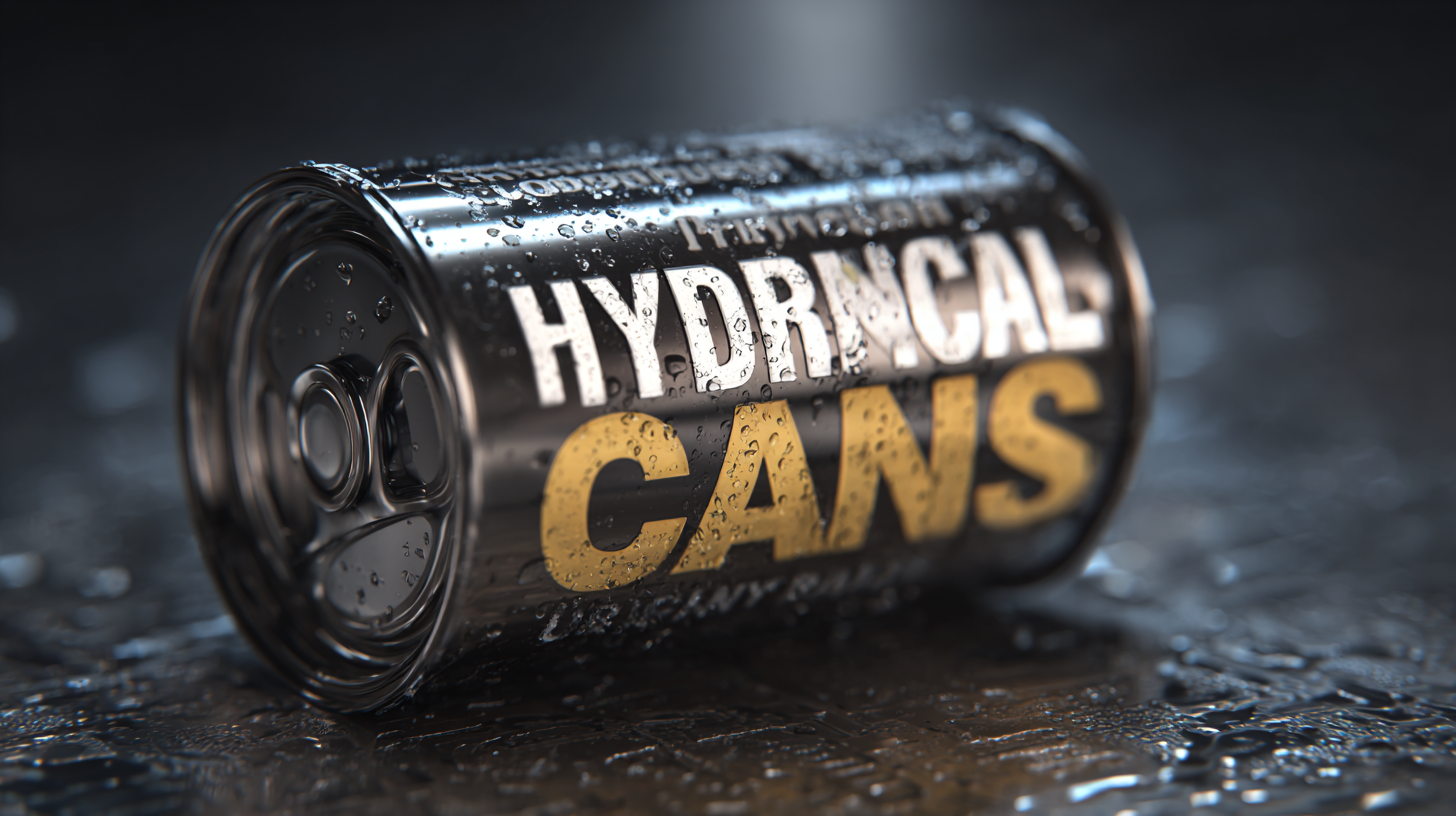In the fast-paced world of industrial applications, maximizing efficiency is paramount, and one crucial tool that plays a significant role in this endeavor is the hydraulic can. These versatile devices, designed for lifting and moving heavy loads, can vastly improve operational productivity when chosen wisely. This blog will delve into the seven essential features that define the best hydraulic cans, ensuring that they are not only capable of handling demanding tasks but also enhance overall workflow.

From their lifting capacity to ease of use and durability, understanding these key characteristics will empower businesses to select the right hydraulic can for their specific needs. Whether you're looking to streamline your processes or elevate your equipment's performance, knowing what to look for in a hydraulic can is the first step towards achieving maximum efficiency in your industrial applications.
When selecting a hydraulic can for industrial applications, there are several key considerations to ensure maximum efficiency. First and foremost, assess the weight capacity and lifting height that the hydraulic can can handle. It's crucial to match the specifications of the can with the requirements of your specific tasks. Overloading a hydraulic can not only diminishes its performance but also poses safety risks. Therefore, always refer to the manufacturer's guidelines.
Another important aspect to consider is the build quality and materials used in construction. A robust hydraulic can made from durable materials, such as high-grade steel or aluminum, will withstand the rigors of industrial environments. Additionally, features like a stable base, ergonomic handle, and a well-designed pump mechanism contribute to ease of use and reduce operator fatigue. Lastly, consider portability if the hydraulic can needs to be moved between different workstations, ensuring that the model chosen is both lightweight and easy to maneuver.
 When selecting hydraulic cans for industrial applications, understanding load capacity is crucial. Load capacity refers to the maximum weight a hydraulic can can safely lift or support, and it directly impacts efficiency and safety in operations. According to a report by the International Journal of Industrial Equipment, choosing a hydraulic can with an appropriate load capacity can improve operational efficiency by up to 30%. This is essential for industries such as construction and manufacturing, where heavy lifting is commonplace.
When selecting hydraulic cans for industrial applications, understanding load capacity is crucial. Load capacity refers to the maximum weight a hydraulic can can safely lift or support, and it directly impacts efficiency and safety in operations. According to a report by the International Journal of Industrial Equipment, choosing a hydraulic can with an appropriate load capacity can improve operational efficiency by up to 30%. This is essential for industries such as construction and manufacturing, where heavy lifting is commonplace.
Tips to keep in mind include checking the manufacturer's specifications to ensure that the hydraulic can meets the specific load requirements of your application. Additionally, regularly inspecting the hydraulic can for wear and tear can prevent unexpected failures during operations, which could potentially result in costly downtime and safety hazards.
Moreover, understanding the types of loads your hydraulic can will encounter can also enhance its longevity and effectiveness. For instance, static loads may require different specifications than dynamic loads. Utilizing hydraulic cans designed for varying operational loads will ensure that industries can maximize their efficiency and reduce the risk of accidents during heavy lifting tasks.
When selecting hydraulic cans for industrial applications, ensuring safety features is paramount. One of the primary aspects to consider is overload protection. This feature prevents the hydraulic can from lifting loads that exceed its capacity, reducing the risk of accidents and equipment damage. Always check for manufacturers who incorporate built-in pressure relief valves, which release excess pressure to avoid burst hoses or structural failures.
Another vital safety feature is stability support. Hydraulic cans equipped with wide bases and anti-slip surfaces can significantly decrease the chance of tipping during operation. It's also beneficial to look for models that include safeguards against environmental exposure, such as waterproof seals and corrosion-resistant materials, ensuring longevity and safe use even in harsh conditions.
Tips for enhancing safety include conducting regular inspections of the hydraulic can for any signs of wear or damage. Training operators on proper usage is also crucial; consider organizing workshops that emphasize safe handling practices. Additionally, encourage operators to utilize the safety features consistently and report any issues immediately to a supervisor. These steps can create a safer and more efficient working environment.

When choosing the best hydraulic cans for industrial applications, selecting the right materials is paramount for ensuring durability and performance. Hydraulic cans can be constructed from various materials such as aluminum, steel, and composite materials, each offering distinct advantages. Aluminum is lightweight and corrosion-resistant, making it ideal for environments where portability and rust prevention are critical. On the other hand, steel is known for its robustness and resistance to deformation under high pressure, perfect for heavy-duty applications.
**Tips:** When assessing materials, consider the operating conditions of your hydraulic system. For example, if exposure to chemicals is likely, opt for materials that have a proven resistance to such elements. Additionally, evaluating the specific loads your hydraulic can will bear can help determine the best material for long-term reliability.
Composite materials are emerging as a popular choice due to their strength-to-weight ratio and resistance to various environmental factors. However, they may not be suited for all industrial applications, especially those involving extreme temperatures or chemicals. As you compare materials, weigh the balance between weight, strength, and environmental resistance to select the hydraulic can that will maximize efficiency in your operations.
**Tips:** Establish a maintenance schedule for your hydraulic cans to extend their lifespan. Regular inspections can help identify any wear or potential failure points before they become critical issues, ensuring optimal performance.
| Feature | Description | Material Options | Durability | Performance Rating |
|---|---|---|---|---|
| Load Capacity | The maximum weight the hydraulic can can lift. | Steel, Aluminum | High | 4.5/5 |
| Corrosion Resistance | Ability to withstand rust and chemical exposure. | Coated Steel, Stainless Steel | Very High | 5/5 |
| Pressure Rating | Maximum pressure the can can operate under. | High-strength Steel, Aluminum | High | 4.8/5 |
| Weight | The weight of the hydraulic can itself for ease of use. | Aluminum, Plastic Composites | Moderate | 3.5/5 |
| Ease of Operation | Simplicity of use in various industrial settings. | Aluminum, Steel | High | 4.7/5 |
| Maintenance Requirements | Frequency and ease of maintenance needed. | Stainless Steel, Plastic Composites | Low | 4.9/5 |
| Safety Features | Incorporation of safety measures like overload protection. | Steel, Aluminum | High | 5/5 |
Proper maintenance of hydraulic cans is crucial for ensuring their longevity and optimal performance in industrial applications. Regular inspections can help identify wear and tear before they lead to major issues. According to a report by the National Fluid Power Association, regular maintenance can increase the lifespan of hydraulic equipment by up to 30%. Common practices include checking hydraulic fluid levels, inspecting seals for leaks, and ensuring that all connections are secure.
Tips for maintaining hydraulic cans include: Always use the correct type of hydraulic fluid as specified by the manufacturer to prevent damage to seals. Additionally, clean the hydraulic system regularly to remove particles that can cause blockages and increase wear on components. Implementing a scheduled maintenance routine will not only reduce downtime but also enhance overall efficiency.
Another essential aspect is to monitor operating temperatures closely. Overheating can drastically reduce efficiency and lead to permanent damage. Studies show that keeping hydraulic cans within the optimal temperature range can improve energy efficiency by 15-25%. Regularly cleaning filters and replacing them as needed is another essential task that can prevent overheating and ensure smooth operation.
This chart illustrates the efficiency ratings of essential features for hydraulic cans used in industrial applications. Each feature is rated on a scale from 1 to 10, highlighting their importance in maximizing operational efficiency.